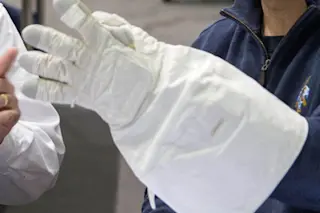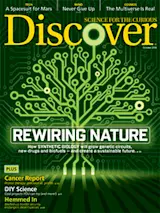NASA’s current generation spacesuit, the EMU (Extravehicular Mobility Unit), is as awkward as its avian namesake. The suit weighs 310 pounds on Earth and needs to be inflated with gas to provide the necessary pressure (4.3 pounds per square inch) the body needs to survive in places with little or no atmosphere. Otherwise, the reduced pressure would boil the fluids in the astronaut’s body, causing them to expand as bubbles and vapors form under the skin, something even less pleasant than it sounds.
MIT engineer Dava Newman decided to overcome the EMU’s deficiencies with a futuristic alternative: the BioSuit. Although NASA isn’t currently funding her research or suit development, she hopes the space agency will consider her design by the time it sends manned missions to Mars in the coming decades.
Instead of high-pressure gas, the BioSuit uses mechanical compression. A full-body elastic outfit, augmented by custom-made shape-memory alloys, squeezes ...















